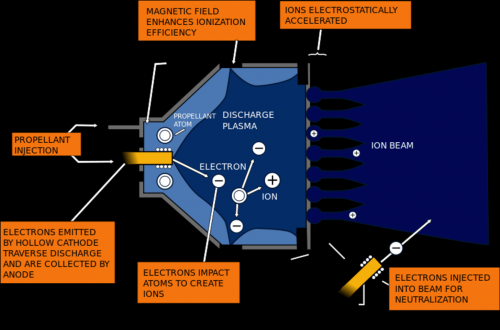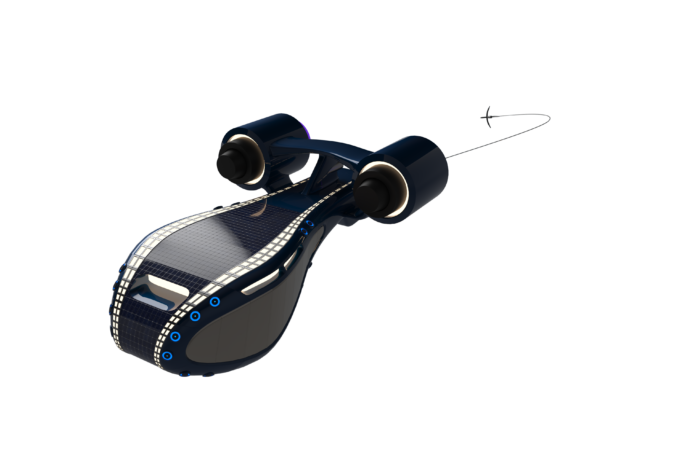How Ion Propulsion Works:
This reduces the amount of reaction mass or propellant required but increases the amount of specific power required compared to chemical rockets. Ion thrusters are therefore able to achieve high specific impulses. The drawback of the low thrust is low acceleration because the mass of the electric power unit directly correlates with the amount of power. This low thrust makes ion thrusters unsuited for launching spacecraft into orbit, but effective for in-space propulsion.

An ion thruster or ion drive is a form of electric propulsion used for spacecraft propulsion. It creates thrust by accelerating positive ions with electricity. The term refers strictly to gridded electrostatic ion thrusters and is often incorrectly loosely applied to all electric propulsion systems including electromagnetic plasma thrusters. Ion thrusters use beams of ions (electrically charged atoms or molecules) to create thrust in accordance with momentum conservation. The method of accelerating the ions varies, but all designs take advantage of the charge/mass ratio of the ions. This ratio means that relatively small potential differences can create high exhaust velocities.

History of Ion Propulsion
Ion engines of various types have been used on space missions since at least 1964 when NASA flew the suborbital Space Electric Rocket Test I mission. Many classes of space missions can benefit through using fuel-efficient ion engines during some phase of their mission. For example, several communication satellites have been raised in their final geosynchronous orbit using ion thrusters. The European Space Agency's SMART-1 lunar mission was placed in geosynchronous orbit by conventional means, and then made the transfer into lunar orbit using an ion engine.
The phrase "engage the ion drive" still has the ring of a line from Star Wars, but these engines have been used in space missions for more than four decades and remain the subject of ongoing research. Ion engines have incredible fuel efficiency, but their low thrust requires very long operating times ... and therein lies the rub. To date, erosion within such an engine seriously limits its operational lifetime. Now a group of researchers at NASA's Jet Propulsion Laboratory (JPL) has developed a new design that largely eliminates this erosion, opening the gates for higher thrust and more efficient drives for manned and unmanned missions to the reaches of the Solar System.
